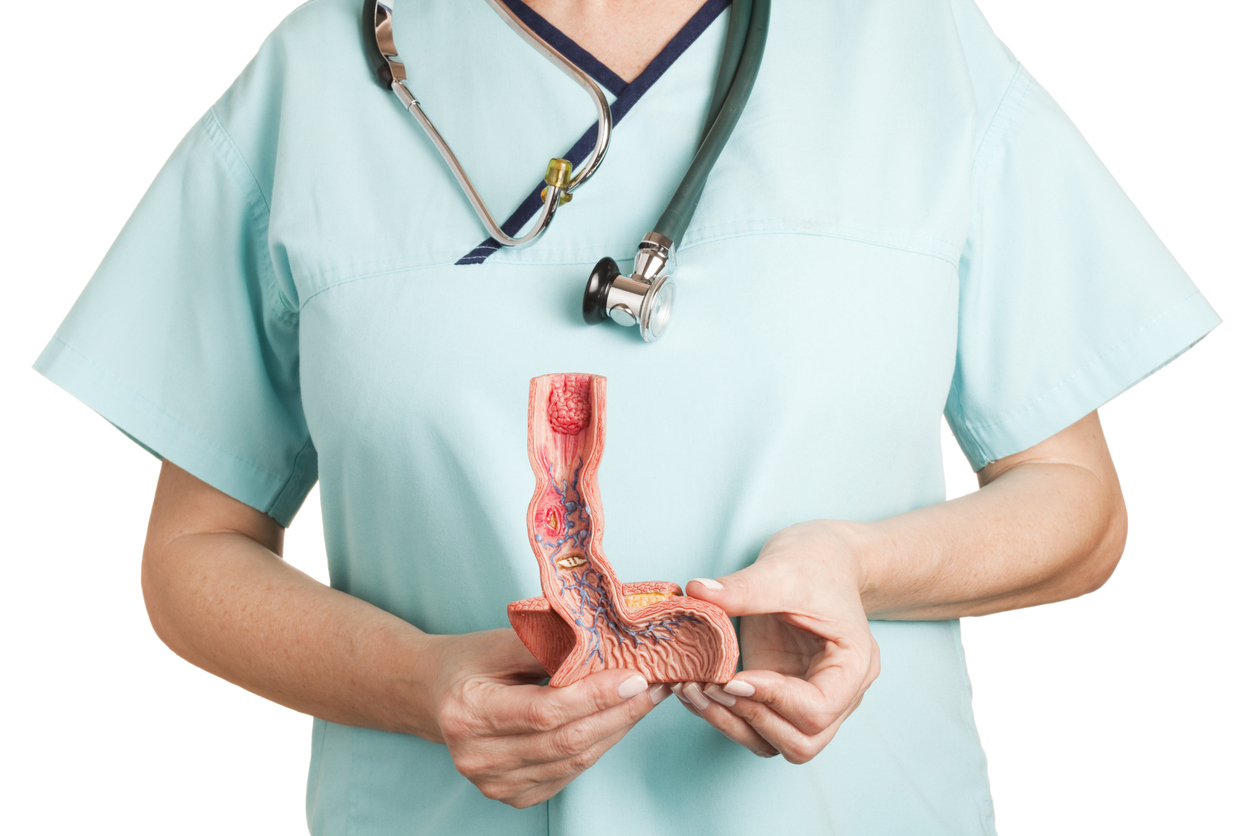Risk Factors for Barrett’s Esophagus
Barrett’s Esophagus is a condition where the lining of the Esophagus undergoes a change, typically due to prolonged exposure to stomach acid. This condition often stems from chronic gastroesophageal reflux disease (GERD) and is a concern due to its association with an increased risk of developing esophageal adenocarcinoma. Understanding the risk factors for Barrett’s Esophagus is crucial for early detection and prevention, which can ultimately lead to better outcomes for those affected.
Barrett’s Esophagus is a condition where the lining of the esophagus changes, typically due to prolonged exposure to stomach acid from gastroesophageal reflux disease (GERD). This condition is noteworthy because it increases the risk of developing esophageal cancer. The primary risk factor for Barrett’s Esophagus is chronic GERD. Persistent acid reflux can cause the esophageal lining to adapt to resemble the intestinal lining as a response to the irritation caused by stomach acids. Those who have had long-standing symptoms of GERD, like heartburn, are especially at risk. Demographically, Barrett’s Esophagus is more frequently seen in people over 50, males, Caucasians, smokers, or those who are obese. A family history of the condition also increases the risk. Being aware of these risk factors is crucial for prevention and screening.
Screening and Diagnosis of Barrett’s Esophagus
Screening for Barrett’s Esophagus typically targets individuals with multiple risk factors, especially those with long-term GERD symptoms. Gastroenterologists may recommend endoscopy, a procedure where a thin, flexible tube with a camera (endoscope) is inserted through the mouth to visually inspect the Esophagus lining for abnormalities. Biopsies can also be taken during an endoscopy to check for the presence of cellular changes indicative of Barrett’s Esophagus. For those diagnosed with Barrett’s Esophagus, regular surveillance endoscopies are often recommended to monitor the esophageal lining for any signs of progression toward cancer.
Management and Treatment Options for Barrett’s Esophagus
For those diagnosed with Barrett’s Esophagus, management typically focuses on controlling GERD symptoms and monitoring the condition for any signs of further progression. Medications such as proton pump inhibitors (PPIs) or H2 blockers may be prescribed to reduce stomach acid production. Lifestyle changes, including diet modification, weight loss, and quitting smoking, also play a critical role in managing Barrett’s Esophagus. In severe cases, or if there’s a significant risk of esophageal cancer, surgical interventions or endoscopic treatments like radiofrequency ablation (RFA) may be considered to remove or destroy the abnormal esophageal lining. Regular follow-up with a healthcare provider is essential to ensure that any progression of the disease can be promptly addressed.
Prevention Strategies for Barrett’s Esophagus
Preventing Barrett’s Esophagus primarily involves effective management of GERD. This can be done through lifestyle adjustments such as dietary changes to avoid foods that trigger acid reflux, maintaining a healthy weight, and elevating the head while sleeping to prevent nighttime reflux. It’s also important to avoid alcohol and tobacco, as they can worsen GERD symptoms. For individuals with persistent or severe GERD, medical treatment is often necessary. Medications like proton pump inhibitors reduce stomach acid and help heal esophageal irritation, playing a critical role in preventing Barrett’s Esophagus. Regular medical monitoring is advised for those with chronic GERD, especially if additional risk factors are present. Endoscopic exams can detect early changes in the Esophagus, allowing for more effective treatment.
Dietary Considerations for Managing GERD and Preventing Barrett’s Esophagus
Diet plays a significant role in managing GERD and, consequently, in preventing Barrett’s Esophagus. A diet rich in fruits, vegetables, and whole grains and low in processed foods and red meats can be beneficial. It’s also wise to identify and avoid specific foods and beverages that trigger individual acid reflux episodes.
Conclusion
Effectively managing GERD and understanding its associated risk factors are key to preventing Barrett’s Esophagus and the subsequent increased risk of esophageal cancer. Those at higher risk should seek regular medical monitoring and adopt personalized management strategies. Through appropriate lifestyle changes and medical care, the progression to Barrett’s Esophagus can often be mitigated or avoided.



 Close
Close